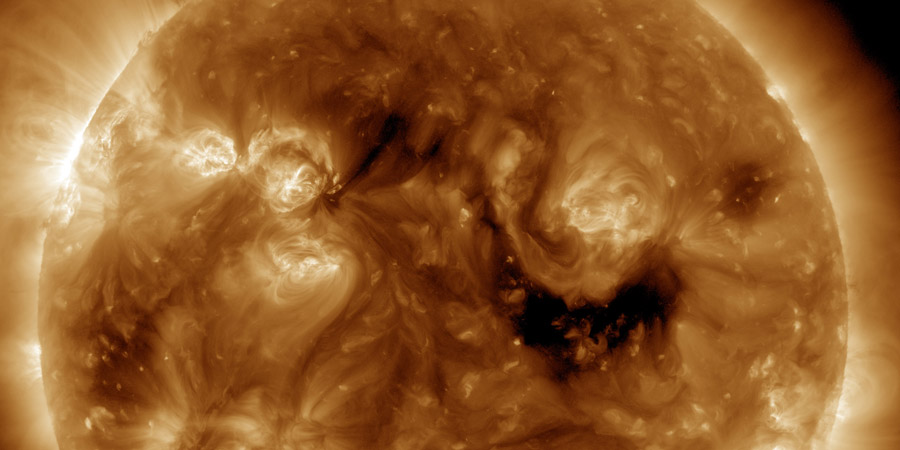Active geomagnetic conditions, Coronal hole faces Earth
Friday, 28 October 2022 17:36 UTC

We are currently seeing enhanced auroral conditions here on Earth. Hard to say what is causing it but the north-south direction of the interplanetary magnetic field has turned southwards which fuels auroral activity. Active conditions (Kp4) have been observed already and minor G1 geomagnetic storm conditions are not impossible. High latitude sky watchers should be alert of possible aurora in the hours ahead.
Coronal hole faces Earth
But that is not all, we also have a trans-equatorial coronal hole facing our planet today. A high speed solar wind stream flowing from this coronal hole is on its way to our planet which could cause some nice auroral displays over the weekend . Minor G1 geomagnetic storm conditions are expected from this coronal hole solar wind stream late tomorrow (29 October) into the early hours of Sunday, 30 October.
Updated Kp-index and color scheme
A bit of housekeeping also: we are following the updated Kp-index and G-scale color scheme as layed out by the NOAA SWPC. The Planetary K-Index will show green Kp values of 4 or lower then follows the G-scale colors which begins with yellow for Kp5. Kp values will now also be displayed in decimal format (e.g., 1.33, 1.67, 2.00).
Thank you for reading this article! Did you have any trouble with the technical terms used in this article? Our help section is the place to be where you can find in-depth articles, a FAQ and a list with common abbreviations. Still puzzled? Just post on our forum where we will help you the best we can!
Latest news
Latest forum messages
Support SpaceWeatherLive.com!
A lot of people come to SpaceWeatherLive to follow the Solar activity or if there is a chance to see the aurora, but with more traffic comes higher costs to keep the servers online. If you like SpaceWeatherLive and want to support the project you can choose a subscription for an ad-free site or consider a donation. With your help we can keep SpaceWeatherLive online!
Space weather facts
| Last X-flare | 2025/12/08 | X1.1 |
| Last M-flare | 2025/12/31 | M7.11 |
| Last geomagnetic storm | 2026/01/02 | Kp5 (G1) |
| Spotless days | |
|---|---|
| Last spotless day | 2022/06/08 |
| Monthly mean Sunspot Number | |
|---|---|
| December 2025 | 124 +32.2 |
| January 2026 | 122 -2 |
| Last 30 days | 109.2 +3.9 |





